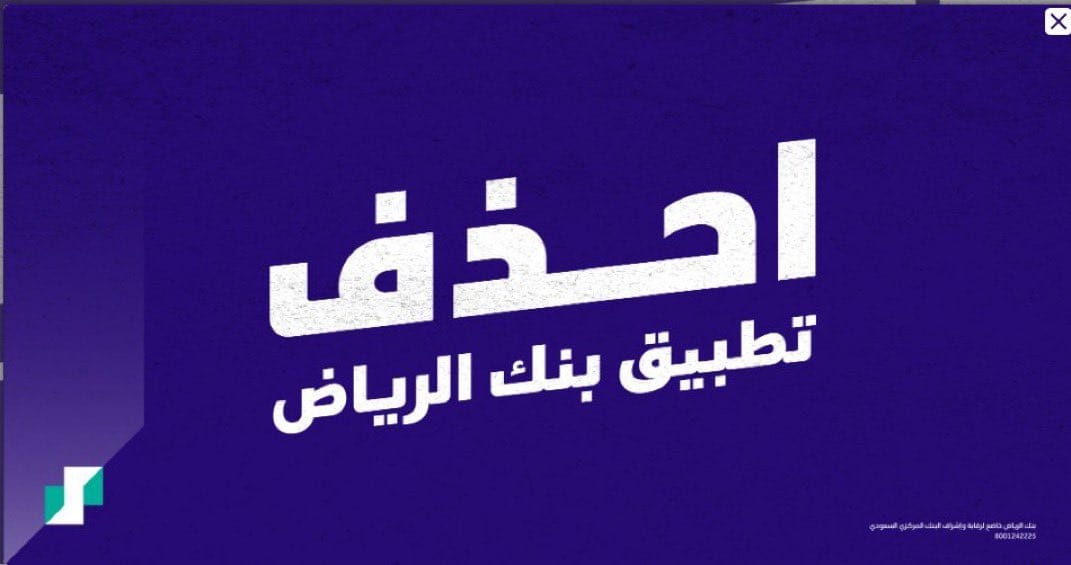"Remove Our App": A Lesson in Banking Industry Marketing Missteps
Discover the lessons from Riyad Bank's 'Remove Our App' campaign and how it highlights the importance of clarity, trust, and cultural alignment in Saudi Arabia's banking industry marketing.

When Riyad Bank launched their “احذف تطبيق بنك الرياض” (Remove Riyad Bank App) campaign, it undoubtedly grabbed attention—but not all attention is good. The bold move sparked widespread debate, with many questioning its intent and execution. For Saudi Arabia’s banking industry, this serves as a critical case study in the dos and don’ts of marketing, especially in a sector where trust and clarity are paramount.
The Shock Factor: Did It Work?
At first glance, the campaign was a classic example of shock marketing—an approach where a brand uses an unexpected or provocative message to cut through the noise. “Remove our app” is certainly an eyebrow-raising statement, particularly when coming from a bank.
But in a market like Saudi Arabia, where consumers value reliability and clarity in financial services, the campaign may have caused more harm than good. Many interpreted the message as an admission of failure or a signal of upcoming service disruptions. This confusion could have been avoided with clearer messaging.
What Riyad Bank Likely Intended
To give credit where it’s due, the campaign likely aimed to:
- Promote a new and improved app: Suggesting that customers remove the old app to download an upgraded version.
- Create buzz: Leveraging reverse psychology to spark curiosity and engagement.
- Stand out in a crowded market: Differentiating Riyad Bank from competitors by taking a bold and unconventional approach.
While these goals are commendable, the execution faltered by leaving too much to interpretation.
The Importance of Clarity in Banking Marketing
The banking industry in Saudi Arabia has unique challenges:
- Customers demand transparency and trust above all else.
- Financial institutions are expected to provide reliable and secure services, with no room for ambiguity.
- Messaging must align with the values of a culturally diverse and conservative audience.
When these elements are not addressed, campaigns risk undermining customer confidence—an essential currency in banking.
What Could Have Been Done Differently?
Riyad Bank’s campaign is a prime example of how great ideas can backfire without proper execution. Here’s what they could have done to ensure success:
- Add Context to the Message: A simple addition like “احذف التطبيق القديم وحمل النسخة الجديدة المحدثة الآن” (Remove the old app and download the new and improved version now) would have clarified the intent instantly.
- Bridge Shock with Trust: Instead of leaving customers confused, the campaign could have included a secondary message focusing on how the new app enhances the user experience—whether through new features, speed, or security.
- Align with Market Expectations: Saudi consumers value clear, reliable communication, especially from financial institutions. Any attempt at humor or reverse psychology should have been balanced with cultural expectations of professionalism.
Lessons for the Banking Industry in Saudi Arabia
Riyad Bank’s campaign holds valuable lessons for all players in the banking sector:
- Be Bold, But Stay Clear: Creative risk-taking is encouraged, but not at the expense of clarity. Always ensure the message resonates with the audience and leaves no room for misinterpretation.
- Understand Your Market: Saudi Arabia’s banking customers expect their financial institutions to communicate in a way that reflects stability and reliability. Campaigns should be tailored accordingly.
- Capitalize on Feedback: Every misstep is an opportunity to learn. The feedback and attention Riyad Bank received should be used to improve future marketing strategies.
A Silver Lining
While the campaign may have stumbled, it succeeded in one key area: people are talking about Riyad Bank. Whether through memes, debates, or critiques, the campaign generated significant buzz. The bank now has a unique opportunity to course-correct and rebuild trust by:
- Launching a follow-up campaign to explain the message in a way that resonates with customers.
- Turning the confusion into a lighthearted moment by addressing it with humor and transparency.
- Highlighting the app’s improvements to drive downloads and engagement.
Conclusion
The Riyad Bank campaign serves as a timely reminder for Saudi Arabia’s banking sector: boldness can be a double-edged sword. When paired with clarity and an understanding of market dynamics, bold campaigns can transform a brand’s image. But when these elements are missing, even the best ideas can feel like a misstep.
For banks, the real message is clear: trust, transparency, and cultural alignment should always come first. Anything less risks more than just losing downloads—it risks losing the customer.





